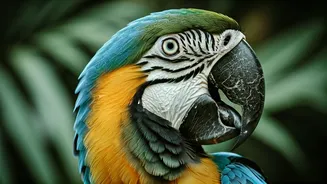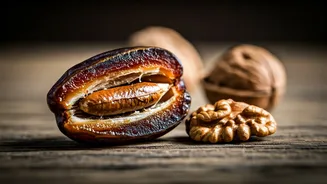Mimicry Masters Revealed
Parrots are renowned for their remarkable ability to mimic human speech. This talent goes beyond simple repetition; they can often associate words with
objects and even use them in appropriate contexts. Their vocal cords, in conjunction with a specialized structure in their trachea called the syrinx, enable them to produce a wide range of sounds. Some species, like the African Grey parrot, are particularly known for their advanced mimicry skills, sometimes accurately replicating human voices and even singing. Scientists continue to study how parrots learn and utilize language, providing insights into animal cognition and communication.
Highly Intelligent Creatures
Beyond mimicking sounds, parrots possess a high level of intelligence. They are capable of problem-solving, tool use, and complex social interactions. Studies have shown parrots can recognize themselves in mirrors, a sign of self-awareness, and understand abstract concepts. They can also learn through observation, imitating the actions of their flock mates or human companions. Their intelligence has made them popular subjects for scientific research, and their cognitive abilities are often compared to those of primates.
Social Butterflies: Flocks
Most parrot species are highly social creatures, living in flocks in the wild. These flocks provide protection from predators, facilitate foraging, and offer opportunities for social learning. Within a flock, parrots exhibit complex social structures, including hierarchies and pair bonds. They communicate through a variety of vocalizations, body postures, and mutual preening. The social environment is vital for their well-being, as isolation can lead to behavioral problems and stress.
Diverse and Colorful World
Parrots display a spectacular array of colors and patterns, a testament to the diversity within the parrot family. Their plumage often serves multiple purposes, including camouflage, attracting mates, and regulating body temperature. Colors can vary widely even within a single species, depending on the region and the specific population. The vivid colors are produced by pigments called psittacofulvins and melanins. Each species has unique feather structures which contribute to their unique colours.
Longevity and Lifespans
Parrots are known for their long lifespans, with some species living for several decades. The exact lifespan varies among different species, with larger parrots generally living longer than smaller ones. For example, macaws and cockatoos can live for 60 years or more in captivity, while smaller parakeets may live for 15-20 years. Their longevity is a factor that people need to consider when considering them as pets, requiring considerable lifelong care and commitment.
Unique Beaks and Feet
Parrots have a unique beak designed for cracking seeds, nuts, and gripping branches, which is both strong and hooked. Their powerful beak enables them to crack open tough shells and manipulate objects with precision. Their feet, also adapted to their arboreal lifestyle, have zygodactyl feet – two toes pointing forward and two pointing backward – allowing them to grasp branches securely and climb with ease. Their specialized feet and beaks contribute significantly to their survival and adaptability.
Diet and Feeding Habits
Parrots have diverse diets, consisting primarily of seeds, nuts, fruits, flowers, and sometimes insects. Their diet varies depending on the species and the availability of food in their environment. Parrots use their powerful beaks to crack open seeds and nuts. In the wild, they play a vital role in seed dispersal, helping to maintain forest ecosystems. They also exhibit sophisticated foraging behaviors, such as using tools to access food or selecting specific food items based on their nutritional needs.
Conservation Concerns
Many parrot species face significant threats in the wild, including habitat loss, illegal pet trade, and hunting. Deforestation and habitat destruction due to agriculture, logging, and urbanization are leading causes of their decline. The capture of parrots for the pet trade also severely impacts wild populations, as many birds are illegally trafficked. Conservation efforts focus on protecting parrot habitats, regulating the pet trade, and promoting captive breeding programs to reintroduce birds back into the wild, preserving these remarkable species for future generations.
















